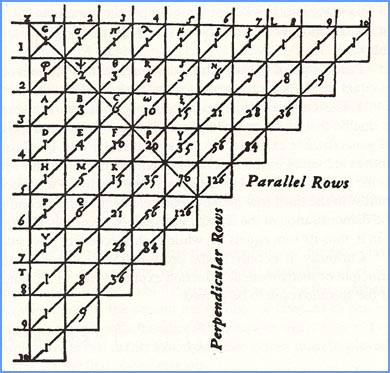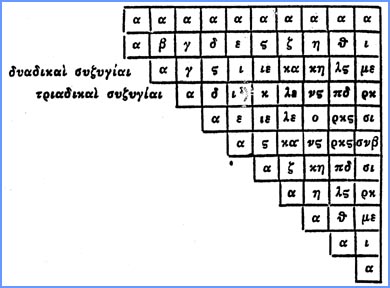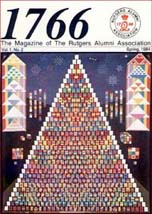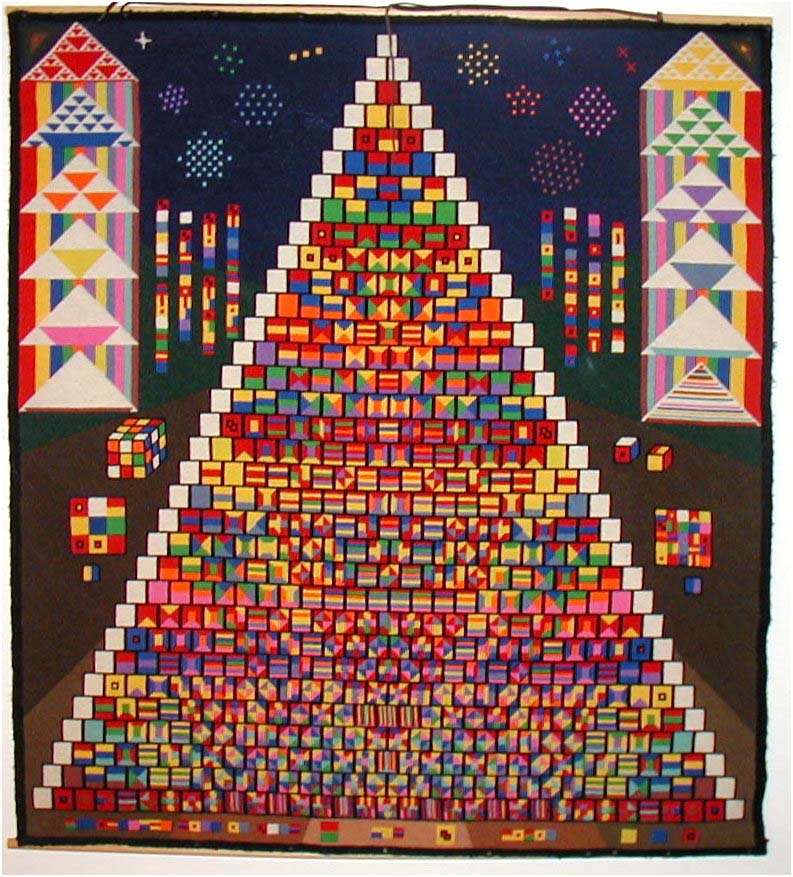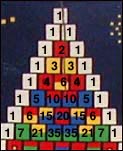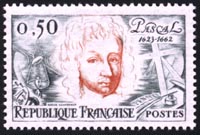In Mitchell's design, prime
numbers ( 2, 3, 5, 7, 11, 13, . . . ) are designated by a single
colored square. For example, the prime numbers 2, 3, 5, and 7 are
represented respectively by the solid colors red,
yellow, blue and green.
The composite number 6 is represented by its prime factor
colors of
red and yellow, or ( 2 x 3). The number 4, or 22
is represented by red with a tiny square. For larger composite
numbers, requiring several factors, Mitchell chose to use the colors of
the prime factors in modified patterns.
Note that 126 = 2 x 32 x 7 is composed of two
parts yellow (3) and one part each of red (2) and green (7). He
finished his triangle with the 32nd row, or 25, or red
with a tiny blue square.
In addition, the project contains math operation symbols, Rubic's Cube,
Sierpinski's Triangle and other mathematical memorabilia.
Mitchell's mathematical needlework required great patience spread over
several years. From a technical view point, each individual block
required 120 stitches. There are over 500 blocks of colors.
In Spring, 1984, Rutgers University honored their former math major by
featuring his creation on the cover of their alumni magazine, 1766.
|

